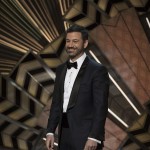In writing about episode one of “Cosmos” this past Sunday afternoon – specifically, the animated sequence about Giordano Bruno, who was condemned by the Roman Inquisition and burned at the stake as a heretic – I broke one of my cardinal rules of blogging: never comment on a movie, book or TV show unless you’ve seen it yourself. Critics often view things through their own ideological lens and, therefore, their take on a project may not be accurate.
Since my post about the show was based on comments by writers on Salon.com and New York magazine, I thought I was getting a neutral point of view. In retrospect, I believe the views they expressed were correct – that the segment gives the impression, as New York magazine said, of “painting organized religion as an irrelevant and intellectually discredited means of understanding factual reality” and as part of the show’s larger “pushback against faith’s encroachments on the intellectual terrain of science.” But I still should have waited until seeing the show myself before writing about it because some of my assumptions were, unsurprisingly, proved wrong.
Other writers wiser than me in the areas of history and science, however, have now criticized the Bruno segment as well – and it isn’t just Catholic writers. “Discover” magazine (tag line: Science for the Curious) has also weighed in and found the show’s hagiography of Bruno lacking the whole truth.
For Discover, Corey S. Powell writes about the Bruno segment:
Here is where Cosmos 2.0 runs into its big problem, missing out both on a chance to set history straight and to embrace the generous, forward-looking spirit of Sagan….
…That depiction in the new Cosmos matches the standard textbook story of Bruno, but it is misleading and in some ways downright wrong. For starters, Bruno was not the first to link the idea of infinite space with the infinite glory of God. That idea actually originated with Nicolas of Cusa, a German philosopher who lived a century earlier (and who wrote about the notion of infinite space even before Copernicus, though not in a detailed astronomical way). Nicolas kept his infinite theology within the Catholic framework, however, and suffered no ill consequences for his views.
Bruno also was not much of a Copernican, or by most accounts much of an astronomer at all. His interests were theological, not physical, and his astronomical writings are considered amateurish and confused…In Cosmos, Tyson does carefully say that Bruno was not a scientist, and instead describes that picture of infinite worlds as a “guess.” But Bruno was not guessing. He was advancing his own, heretical theology, which goes a long way to understanding the real reason that he was burned at the stake….
…Nor was Bruno the simple, humble figure shown on TV. A major reason he moved around so much is that he was argumentative, sarcastic, and drawn to controversy. He engaged in bitter academic disputes, many of which had nothing to do with his cosmic framework. One example He fled France because of a violent dispute about the proper use of a compass (seriously).
None of this means that Bruno in any way deserved his fate. But neither does he deserve to be reduced to a cartoon about intellectual freedom. He was a brilliant, complicated, difficult man…
…While Bruno was making grand pronouncements and racking up enemies, Thomas Digges was quietly doing much more to bring the ideas of Copernicus into the mainstream of European thinking. Digges was one of the leading astronomers in 16th century England–a place where Catholic doctrine obviously did not hold the kind of sway that it did in Italy. In 1576, Digges published the first English translation of Copernicus’s revolutionary (literally) text, De revolutionibus.
Digges’s goal, in the words of science historian Francis Johnson, was to make the ideas of Copernicus and the sun-centered universe available “to the skilled artisans and mechanics whose intelligent co-operation was so necessary to successful research in the sciences.” Digges was not just an astronomer, he was also a popularizer of science. You might call him the Carl Sagan of his day…
…OK, you may still be thinking that this is much ado about nothing, splitting hairs over old astronomical history. I believe otherwise. The story of Bruno and Digges has a lot to say about the way science operates today, and about the spiritual side of science that Sagan was so adept at exploring.
One irony of the Cosmos narrative is that Bruno very likely got some of his ideas from Digges, since Digges was widely read and Bruno spend two years in England in the 1580s. A second, deeper irony is that in trying to show how science and religion sometimes worked hand in hand, Cosmos missed a chance to showcase a key episode in brokering peace between the two sides.
Bruno was a pugilist and an ideologue. In many of his ideas he was right–wildly, spectacularly right–but his method of spreading his ideas alienated his supporters. More importantly, his ideas sprang from faith nearly as much as did the ideas of the Church; Bruno was far from a scientist in the modern sense.
Digges, in contrast, was focused on advancing the work of Copernicus. He helped lay the intellectual groundwork for Kepler and Galileo, and established England as a beachhead of progressive scientific thought. “The influence of Digges’ treatise on contemporary astronomical thought can hardly be overestimated,” Johnson continues. Digges grafted the idea of infinite space onto Copernicus’s idea of a sun-centered solar system, showing that the two ideas naturally go hand in hand.
By presenting the heliocentric system not as heresy but as an extension of classical learning, Digges pointed out a path forward: away from superstition and theological debate, toward the modern world in which scientific theories own real power as physical descriptions of nature.
Powell here captures the real problem with the way “Cosmos” lionized Bruno: it fed into the narrative that religion and science are incompatible. And while there are loud voices in our culture who believe there is a religion-science divide, there are many more quieter folks who don’t have an issue reconciling the two.
Jack Jenkins, writing on ThinkProgress, says:
Others have rightly noted that the core message of the Bruno narrative isn’t that God doesn’t exist, but rather “your God is too small.” The “your” here is directed not at believers at large, but instead implicitly pointed at the small minority of conservative Christians who continue to doggedly insist that science is somehow incompatible with religion.
And make no mistake, they are a minority. Although it receives less airtime than fundamentalist theological strains, scientifically-informed theology is norm — not the exception — among modern American Christians.
That might come as a surprise to writers who continue to paint the default position of Christianity as anti-science, but it’s true.
Ironically, if the writers of “Cosmos” had handled the Bruno segment a little differently, by also profiling others like Copernicus, Galileo and the above-mentioned Digges with the honesty and complexity their stories demand, they would have found allies instead of antagonism in the Catholic community who simply want their history told fairly, the good along with the bad.
That shouldn’t be too much to ask from those who say they’re committed to verifiable truth.
RELATED:
From “The Federalist:” Five Things Neil deGrasse Tyson’s “Cosmos” Gets Wrong












